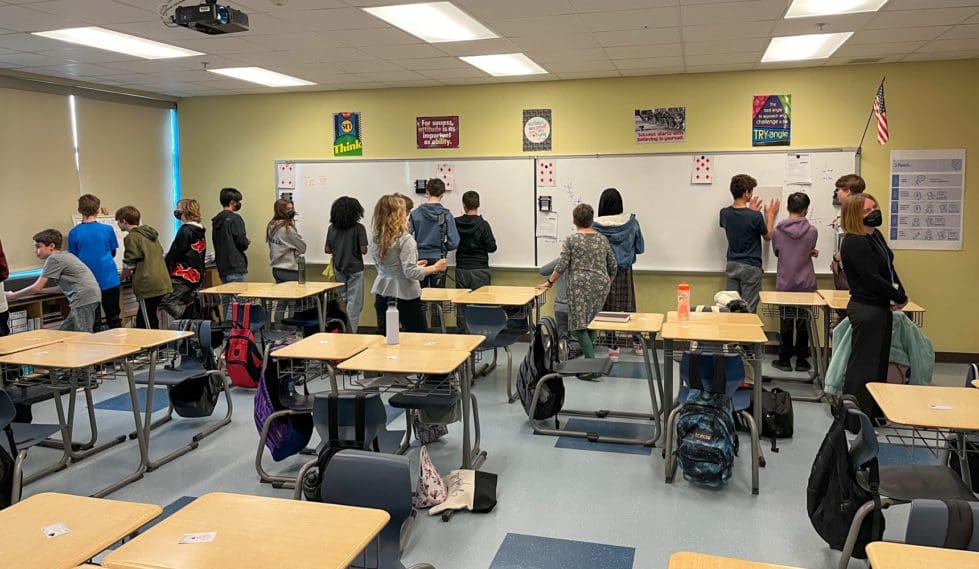Four Springer Middle School teachers told visitors Wednesday that they were all opposed to a new curriculum designed to increase math scores.
Now they love it, the teachers told members of the Knowledge Matters Campaign, there to congratulate the school for its successes.
“The curriculum we use forces teachers to really listen to the kids,” said Trish Mexiell, a math teacher at Springer.
Sometimes, kids just need to have something explained by other kids, said Laura Carlson, a Springer math teacher.
Related: National tour to celebrate Delaware’s shift in math education
Representatives from Knowledge Matters interviewed the four teachers as part of their visit.
The school and the Brandywine District now use “Kendall Hunt’s Illustrative Mathematics 6-8 Math,” published in 2019.
While the COVID-19 pandemic has made it hard to compare apples-to-apples in student testing scores, the teachers said the high-quality materials they were using helped elevate student involvement in their own learning.
Teachers went through hundreds of hours to understand the new curriculum and be able to teach it effectively.
Brandywine’s efforts to put students at the forefront of discussions, ideas and collaborations has resulted in more student engagement and a lively environment in the classroom, the teachers said.
Carlson breaks her classes up into groups of three – the groups alternate every day.
She then has each group of students complete problems on whiteboards around the room, as she circles the room to assist.
The students in her classroom are constantly chatting with one another, Carlson said, and are having fun while doing math.
“They can’t wait to get into their groups and start working,” she said.
Because their working partners are different each day, students who aren’t as proficient can benefit from those who are.
Carlson said having the students stand up and walk around the room keeps them from getting distracted or dozing off.
She also loves using whiteboards so students can erase and correct problems without hurting their confidence, like a marked-up worksheet might.
The teachers on the panel described their teaching approach as “thin-slicing:” a way to give students small problems to build up their confidence in tackling a problem.
They also have a warm-up and a cool-down problem that serves as an entry and exit period for the class and helps teachers gauge each students’ understanding of that day’s lesson.
“I don’t even make worksheets anymore,” said Beth Wall, a special education math teacher.
The students who are really impacted by the classroom changes are those who struggle in school, and math in particular, said Michelle Kutch, director of curriculum and instruction in the Brandywine district.
“The curriculum is cyclical in nature and new lessons usually build on previous material,” she said, “Students develop proportional reasoning and really pound the instruction in their head as teachers incorporate previous concepts into current learning.”
The panel also said that students with individual education programs have found that group work helps them learn better. Even shy students break out of their shell socially.
Appoquinimink and Caesar Rodney school districts hosted the Knowledge Matters tour earlier in the month.
Brandywine is the only district in Delaware that has had two Knowledge Matters Campaign tours recognize and visit them.
The tour came to Claymont Elementary last year to highlight English language arts.


Raised in Doylestown, Pennsylvania, Jarek earned a B.A. in journalism and a B.A. in political science from Temple University in 2021. After running CNN’s Michael Smerconish’s YouTube channel, Jarek became a reporter for the Bucks County Herald before joining Delaware LIVE News.
Jarek can be reached by email at [email protected] or by phone at (215) 450-9982. Follow him on Twitter @jarekrutz
Share this Post




